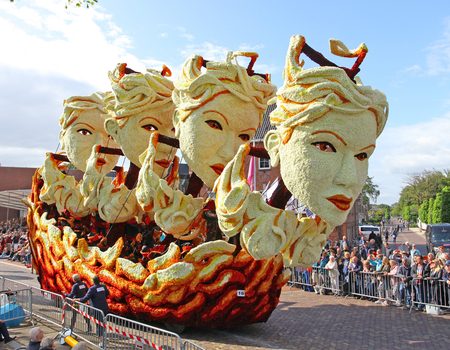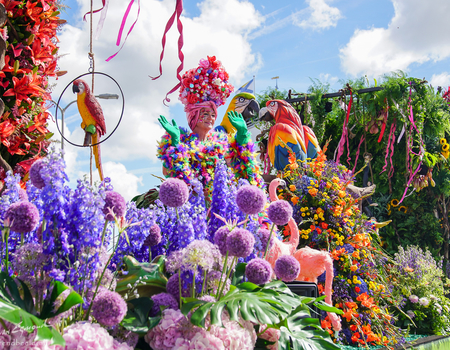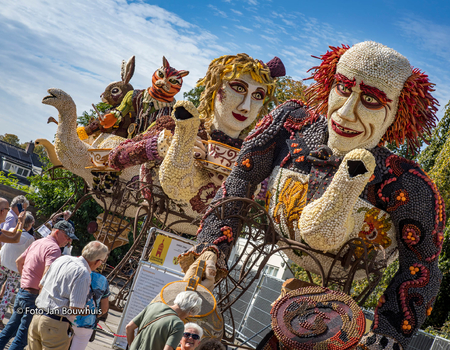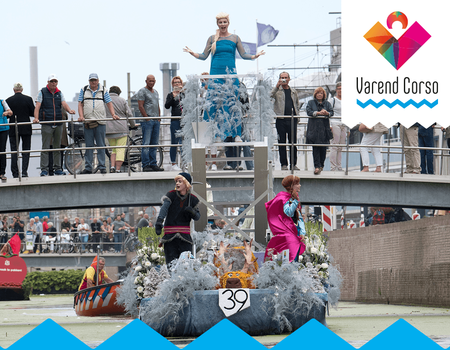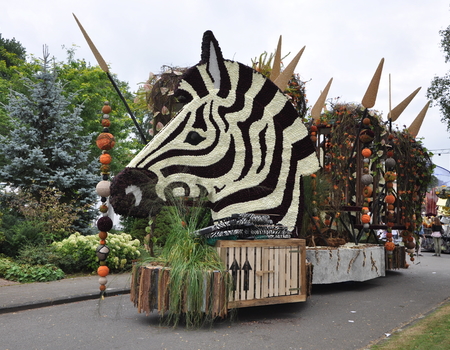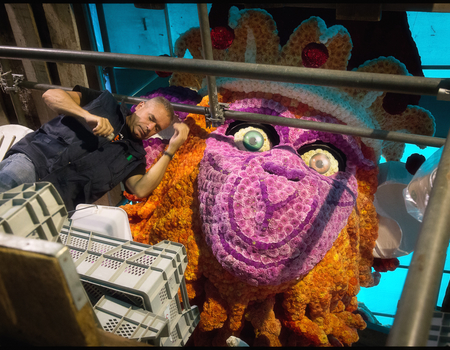What is a 'corso'?
A 'corso' is an annual parade of floats with products such as flowers, fruit, vegetables and so on. The parade is often enriched with music corps and theater. Some take place in the evening and are then illuminated. It is a competition: the most beautiful creation, judged by a jury, wins the prize.
Corso's in Network, Inventory and Register
There are 30 corsos in the Netherlands, several of which are included in the Network and the Inventory of Intangible Heritage in the Netherlands. The corsos are united in the Corso association, which is included in the Register of Inspiring Examples of Safeguarding. At the bottom of the page you see an overview of the corsos in the Network and the Inventory.
Practitioners and communities
Each corso has building groups or neighborhoods that build a creation every year and sometimes maintain a flower field. The number of people in a building group varies from a dozen people to a few hundred. In total, around 75,000 volunteers actively participate in the construction of the creations.
The corso's are organised by boards and working groups, together about 2,500 volunteers. In addition, other volunteers are active during the event, such as jury members, dancers and actors, musicians, guilds, traffic controllers, procession leaders, photographers, etc. These are an estimated 5,000 volunteers.
The corso events attract more than 1,500,000 visitors from home and abroad every year. The TV broadcasts are viewed by more than 2,000,000 people both nationally and internationally.
Local and regional authorities are also closely involved in Corso culture. This includes building and event permits, facility services, grants and the environmental vision.
Locations
There are thirty corsos throughout the country. Most of the corsos take place in villages. Generally, every group that participates in the parade with a float has its own construction site, somewhere in or just outside the village where the parade takes place. During the event, the procession of floats passes through the village, the public is watching the parade along the side of the road or from stands.
The mutual diversity of the corsos is large: usually they are mobile creations, but there are also sailing corsos and still flower mosaics.
Most corsos use flowers. Bulb flowers in the spring (tulip, hyacinth and daffodil) and in the summer dahlias. Many corsos grow their own flowers. Dahlias' can be harvested several times and exchanged between corsos. There is also a Fruitcorso (Tiel). Many corsos use alternative products such as vegetables, horticulture, reed, bark, grass, seeds, plants etc.
Corso association
The corsos in the Netherlands are united in the Corso association. This collaboration is included in the Register of Inspiring Examples of Safeguarding, which shares the methodology of setting up a National collaboration: the Corso association.
Nomination for UNESCO List
Minister Ingrid van Engelshoven has announced that she wants to nominate Corso culture for the Representative List of Intangible Cultural Heritage of Humanity of UNESCO. Currently, the corsos, the Dutch Centre for Intangible Cultural Heritage and the Ministry of Education, Culture and Science are working hard to complete the file and submit it to UNESCO before 31 March.
